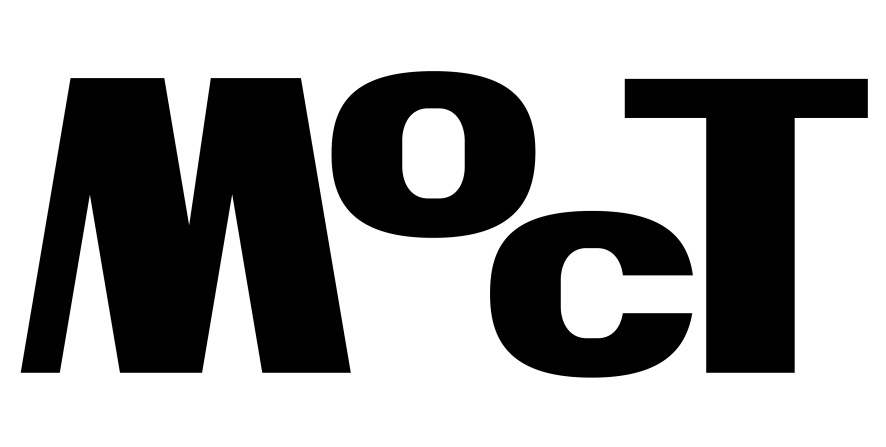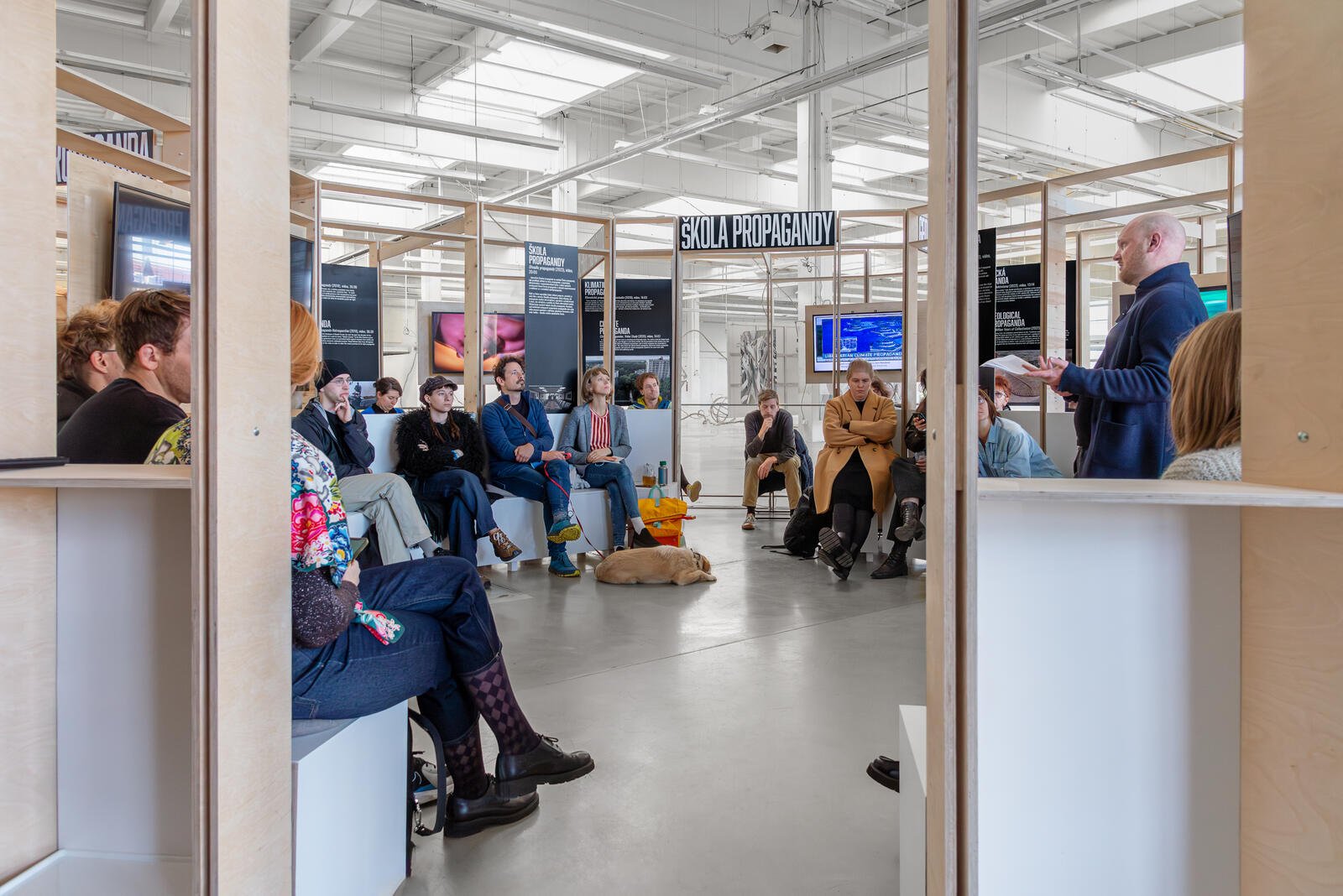John Hill
“Politics is downstream of culture” said Andrew Breitbart, founder of Breitbart News, the website Steve Bannon led to become “the platform for the alt-right.”[1] It’s certainly something that Bannon seems to believe, as does Dutch artist Jonas Staal, whose work seeks to not only make political statements, but direct political interventions. Staal calls Bannon “a contemporary propaganda artist.” The visual tropes of 10 of Bannon’s “film-pamphlets” – car crashes, burning money, sharks, and, most of all, storms – are extracted by Staal for his 2018 work Steve Bannon: A Propaganda Retrospective, a 40-minute single-channel silent video of archival and stock footage familiar from a thousand similar low-budget YouTube documentaries and conspiracy videos[2]. While Staal might show that Bannon’s tricks are cheap, they’re also effective; if Bannon is a propaganda artist, this is art that can change the world.
This video was one of eight installed as part of Propaganda Station (2023-24) at PLATO Bauhaus, Ostrava. An open, circular, wooden structure housing video works by Staal that date back to 2010 were presented in roughly chronological order, each featuring a different facet of contemporary propaganda. Staal was the invited international guest for the 2023 Jindřich Chalupecký Award, the annual prize for emerging Czech artists (in recent editions, an established international artist has been chosen to show alongside the Chalupecký laureates). The 2023 laureates – Kryštof Brůha, Lenka Glisníková, Petra Janda, Gabriela Těthalová and the StonyTellers collective – shared the vast space of PLATO Bauhaus with Staal and the institution’s multiple permanent works, establishing links between the social practice elements and environmental concerns visible elsewhere in the exhibition with Staal’s installation.
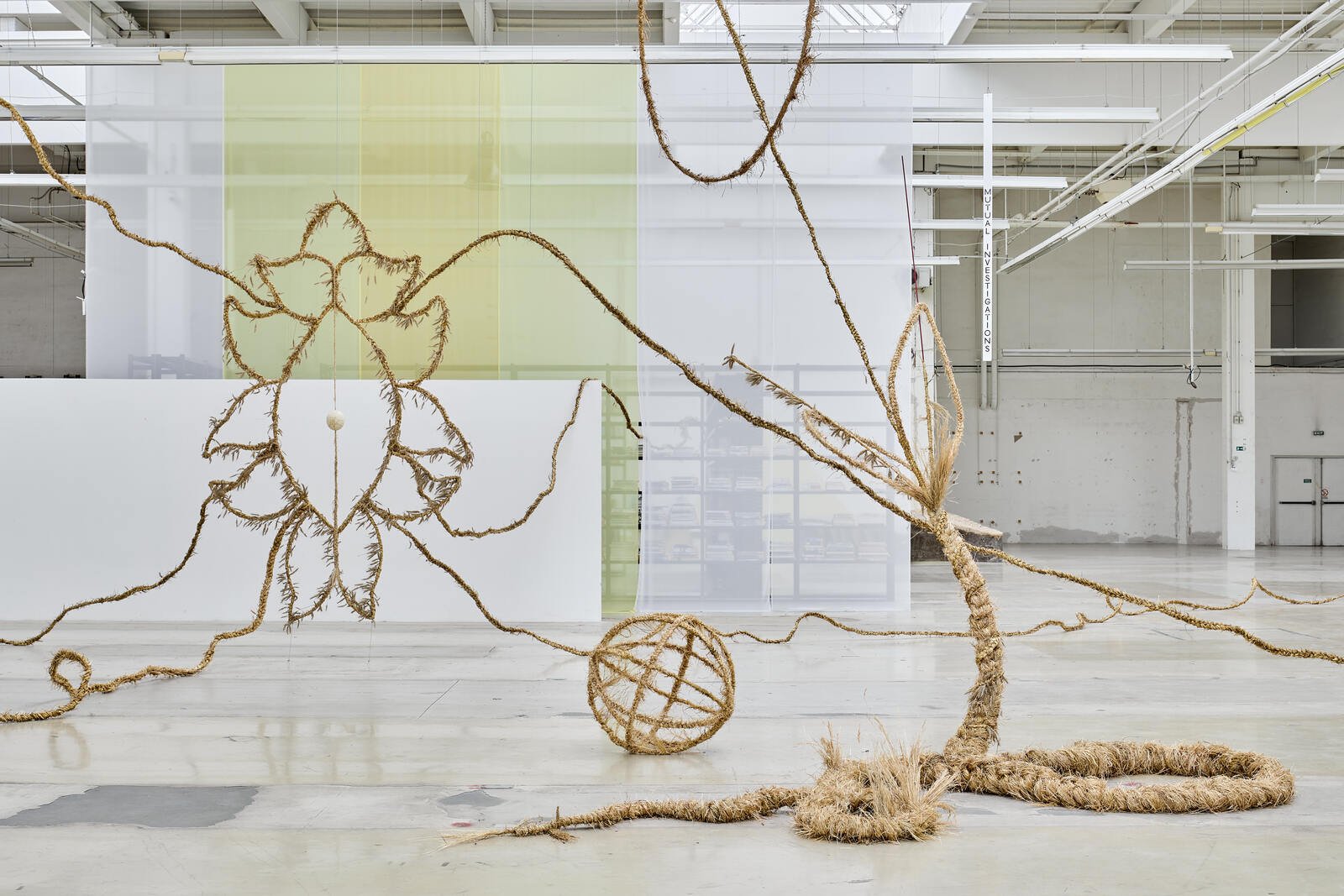
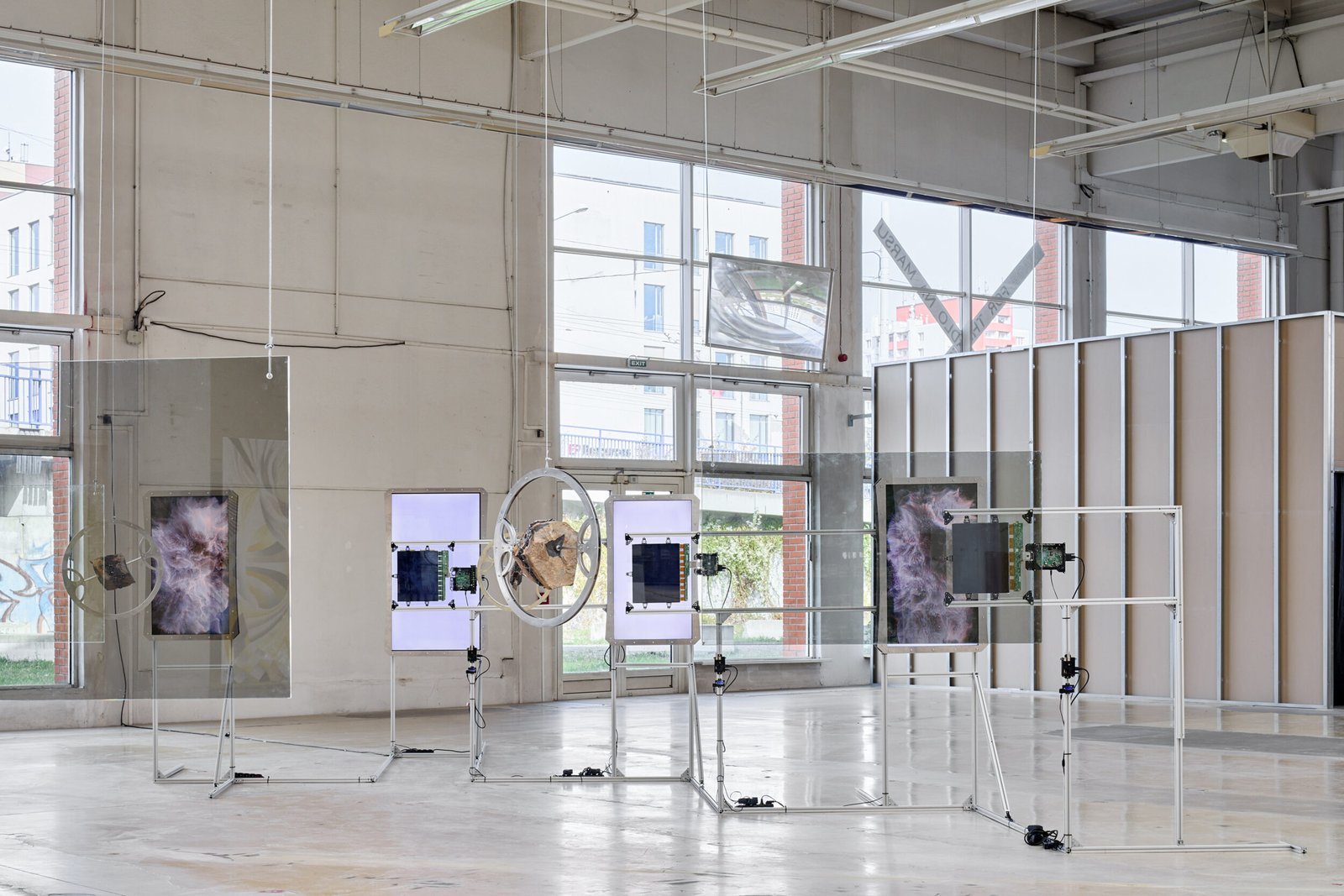


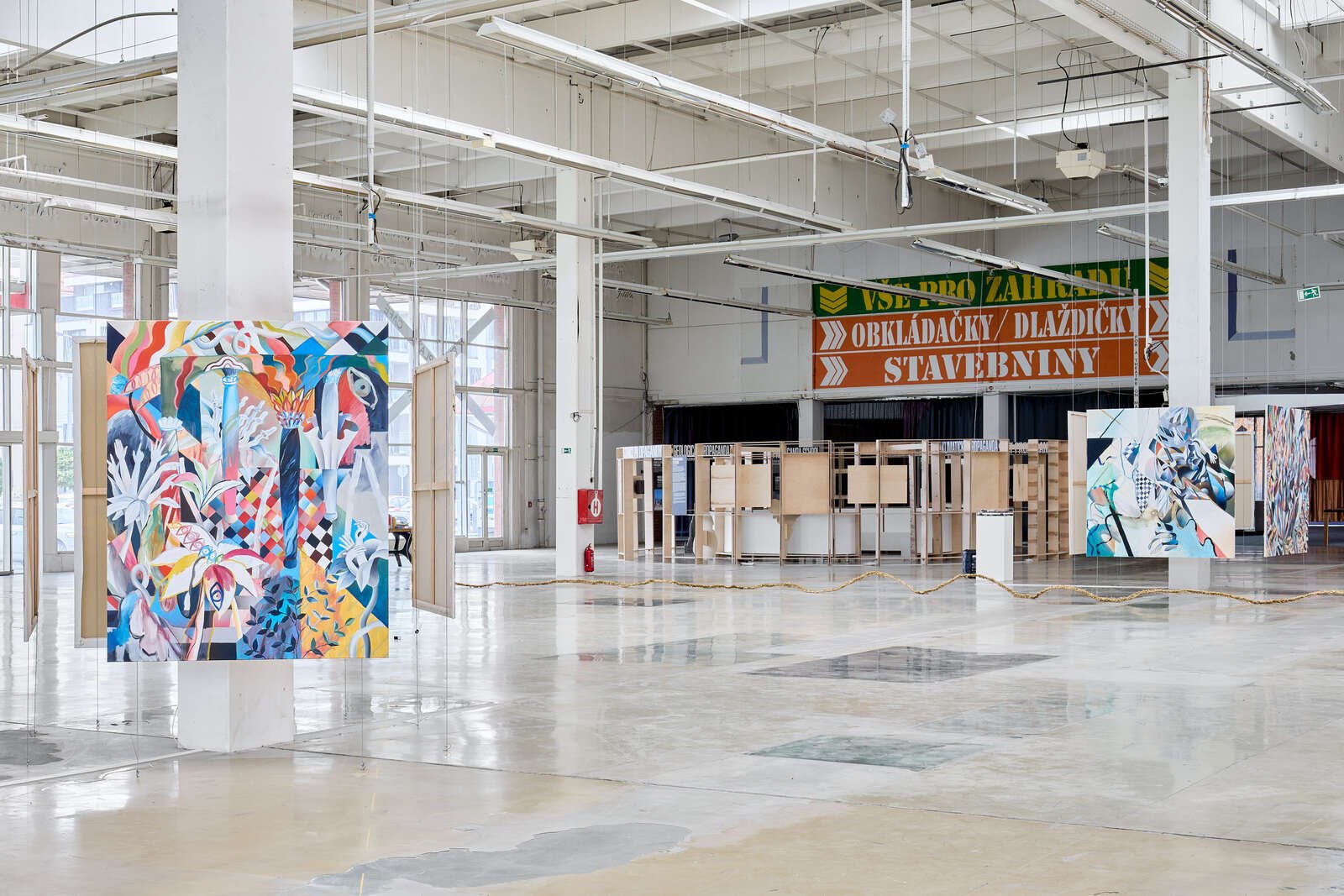
Staal went to the same art school as Dutch right-wing politician Fleur Agema, whose thesis project was a gamified prison – a Skinner box[3] village that rewards behavioural compliance. Staal took and visualised this work for his 2011 video Closed Architecture. Staal’s voiceover guides us around a 3D rendering of the four-tiered prison, where prisoners can graduate from a literal dungeon to what looks like expensive student accommodations, designed to prepare them for reintegration into society. This is Agema’s imagining of her model society: hierarchical, austere, cruel, secure. For Staal, what can be imagined can become real – politics is downstream of culture – but there seems to be an acknowledgement from him that it is political actors on the right, like Agema and Bannon, rather than artists, who recognise the political power of imagination.
The central video of Staal’s installation is the newly commissioned Propaganda Theater (2023). This video essay starts with the argument that propaganda is not reserved for historic or contemporary totalitarianisms – Nazi Germany, Russia, North Korea – but is actively employed in the “liberal capitalist democracies of the North.”[4] Over footage of speeches by Trump, Meloni, Modi, Le Pen, Erdogan and Orban we are told: “The propagandist knows: stories are not just stories. Fiction is not fiction.” Reactionary politics is always a story of return – like the slogan “Make America Great Again”[5] – that which embodies what Russian-American theorist Svetlana Boym calls “restorative nostalgia.”[6] Composed, like Bannon’s films, mostly of archival material, the original footage in Propaganda Theater shows two scale models: the White House Situation Room, where Obama famously oversaw the assassination of Bin Laden, and Russia’s National Defence Management Centre in Moscow. America’s Army, the video game series and recruitment tool for the US military, is shown alongside Hezbollah’s equivalent, Special Operations. In order to transform fiction into reality, propaganda requires the audience to become “spect-actors”: “To become a spect-actor one goes deep into the screen first and then exits the tunnel offscreen on the other side.” By creating the possibility to virtually enter into the model it becomes a simulation – something Staal likens to immersion in a video game – the complimentary inversion of Hito Steyerl’s idea that images have “started walking through screens, right into reality.”[7] In the study of video games, however, immersion is a contested and slippery term[8] and spect-actors – an idea Staal takes from Augusto Boal’s Theatre of the Oppressed – have real power to effect the events they are witnessing. In a game, like at the theatre, the feeling that we are actors and not just spectators – “when the world we are performing feels like our own” – can be the thing that reminds you that you are participating in a fiction: influencing the story breaks the illusion. The control that a game allows you, when you’re aware of it, breaks the simulation and returns you to the model; a simplified representation of the world that can be observed from the outside, rather than experienced from inside. Staal’s work seems to demand from us some kind of authentic, non-propagandistic action, but playing a part – with the emphasis on play – might be the thing that allows us to really question the script we’ve been given: models, games, and stages all allow you to take a step back and observe the effects of your actions from a critical distance.
Questions, or rather online fights, about what and who video games are for, and what they mean, were a key part of radicalising what has become the alt-right, connecting misogynistic, online gamer culture to a reactionary right-wing political project. Propagandists, like those at Bannon’s Breitbart, were able to link the critique of popular media – like Anita Sarkeesian’s Tropes vs Women in Video Games – and the loss of economic prospects for young men in liberal capitalist democracies. Taking games and their ideology seriously, and using methods informed by feminism and cultural studies, a “post-modern neo-Marxist”[9] attack on male identity could be articulated; one that had been already undermined by the “feminisation” of labour: de-industrialisation and wage suppression.
Most of the videos in Propaganda Station intend to deconstruct these narratives, rendering them transparent. Staal’s clearest attempt at his own propaganda, 94 Million Years of Collectivism (2022), tells of an alternative to economic and environmental crises that mobilise Bannon’s films. Rather than talking to the direct experiences of a specific audience, though, he starts at the point of foundational mythology: that the Ediacaran period (635-541 million years ago) which was a time when life on earth was supposedly cooperative rather than competitive. As a result, Staal argues, this softer, more permeable form of life is much less likely to appear in the fossil records than the later, harder, predatory Cambrian period. Ideology, what is understood as natural, can’t see what doesn’t fit into its own world view. Likewise, without a narrative, we can’t think a different future into existence. In the early 1950s, former Nazi rocket scientist Wernher von Braun worked as a technical advisor to Walt Disney on the Tomorrowland section of his planned Disneyland theme park. In return, Disney advised on the aesthetics of von Braun’s rockets that would later form the basis of NASA’s Apollo program, which became urgently necessary in 1957 when the USSR successfully put Sputnik 1 into orbit.[10]


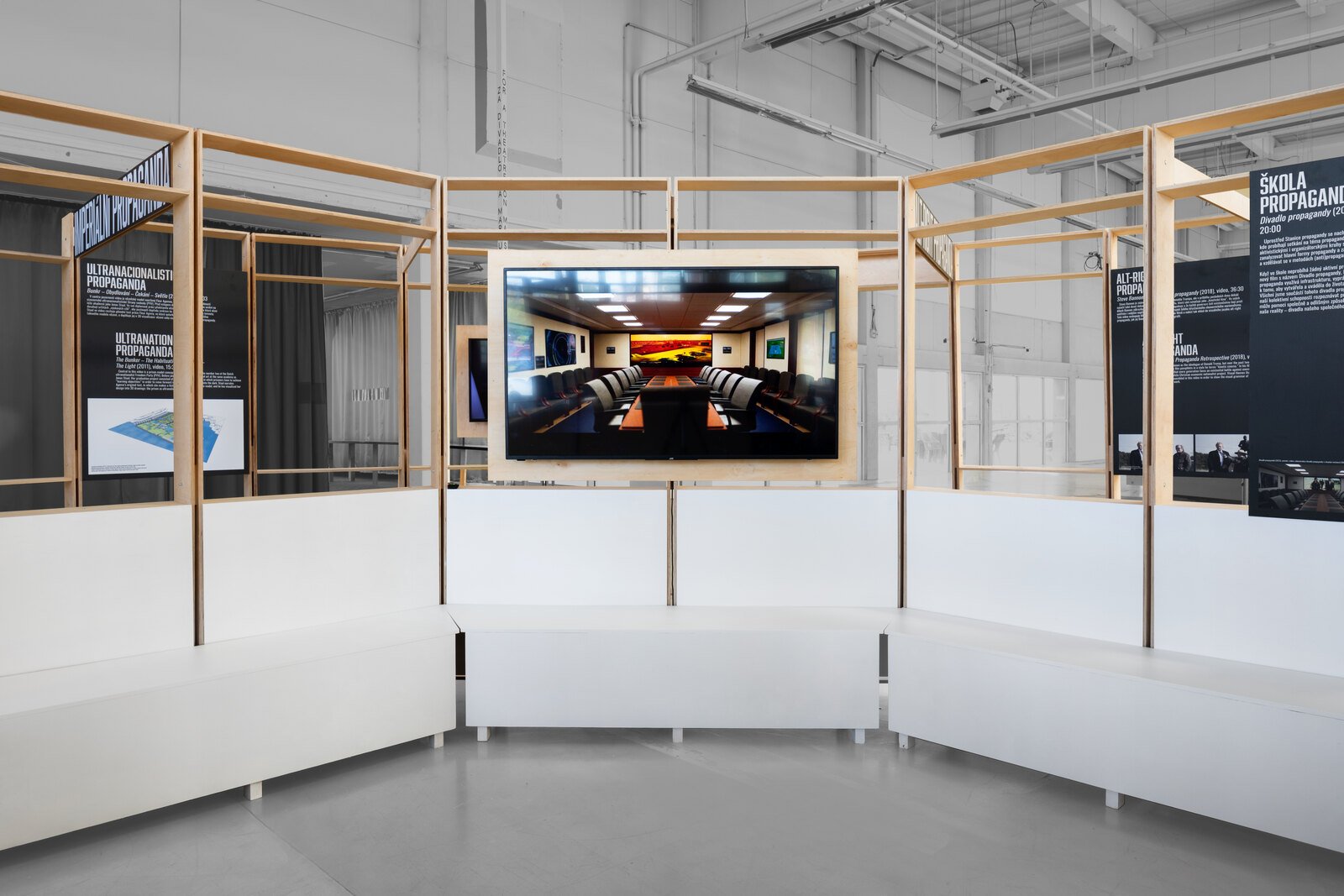
The centre of Staal’s installation was designed to host a programme of events – the School of Propaganda. Like many of his projects, Staal’s work acts as a platform, a stage. While Staal hints at different ways the world could be, he – unlike Bannon – does not want to give us a script. Instead, he wants real spect-actors to engage, who don’t just feel like this is their story but who are able to act with real freedom. Vincent Bevins, in his history of mass protests in the 2010s, If We Burn: The Mass Protest Decade and the Missing Revolution, sets up an opposition between representational politics – where a small group can legitimately speak for and make demands on behalf of a larger group – and prefigurative politics – the anarchist-inspired idea that we should not make demands on those with power, but act now as if the power is already ours. While Staal is clearly engaged with ideas of representation, the works themselves – summits, parliaments, and training camps – are resolutely pre-figurative; they are models in which audiences and participants can act as if the world is different. As Bevins makes clear, however, representation – both who can represent a protest and how it is made visible to itself and others – is a necessary and incredibly important part of coordinating collective political action. The book’s title comes from a banner unfurled by anti-government protesters in Hong Kong in 2019 that read “If We Burn, You Burn With Us,” itself a quote from Katniss Everdeen, the reality TV star and militant insurrectionist of The Hunger Games.
Close to Staal’s installation is another circular, wooden construction, a 1:10 scale model of the new Ostrava Concert Hall, built to test its acoustics. Models, as simplifications of the world, are representational, though they don’t have to look like the thing that they model and, like the severely delayed concert hall, can precede the thing they map. The problem, however, is that effects we can test and observe in the model at one scale don’t necessarily work in the same way at another. Bevin’s book – which covers almost the same period as Staal’s works – details how the wave of “spontaneous” and “leaderless” uprisings in the Global South often ended up empowering the forces they rallied against. Protests grew bigger and more powerful – one thousand, ten thousand, a million people – until something broke: the model of taking over the square no longer worked and protest organisers lost control of the narrative. If there’s a villain of Bevins’ story it’s Jair Bolsonaro, who co-opted anarchist protests against a rise in bus fares in São Paulo in order to impeach the president, jail his main opponent, and get elected as the farthest right leader of Brazil since military dictatorship. If there’s a hero, it’s Gabriel Boric, the Taylor Swift fan who began the decade as a student protester and ended it as the president of Chile, presiding over two (failed) attempts to rewrite the Pinochet-era neoliberal constitution. Both represented the streets and, necessarily, misrepresented them as well, though to different degrees. But both told a story that people could feel was theirs, as violence or fatigue cleared them from the stage.
“Those who cannot represent themselves will be represented” says Bevins, quoting Turkish political scientist Cihan Tuğal.[11] Almost none of the protests in the 2010s that became large enough to destabilise their governments became organised enough to either extract their demands or replace them entirely. Any kind of assembly – a protest, a school, or a summit – needs a representation of itself that it can recognise in order to act collectively; a story it can tell itself about itself. PLATO Bauhaus – named after the hobbymarket whose former building it inhabits – is itself a platform modelled after the kind of institutional practice advocated for by Jindrich Chalupecký Award judge Charles Esche, with which Staal is very much associated. It is an open, multifunctional public space that – as demonstrated by the current petition to save it from closure and demolition – is much valued by the local community.
Platforms generate the question of how and with what to fill them. If the artworks that they host are themselves platforms, then this simply defers the problem. In this context, representational art – art that reflects back a viewers’ life, whatever that life looks like – can be a powerful political act. It would also be, functionally, propaganda. Like the protests which destabilised power without being able to replace it, hoping that what came after would automatically be better, Staal’s Propaganda Station deconstructs the tools of the reactionary right but leaves at its centre a space to be filled, unwilling to really become a propagandist himself. But empty stages get filled, and those who have a story that feels true to the audience have the best chance to fill them, and, if politics is downstream of culture, have the best chance of turning their imaginations into reality.
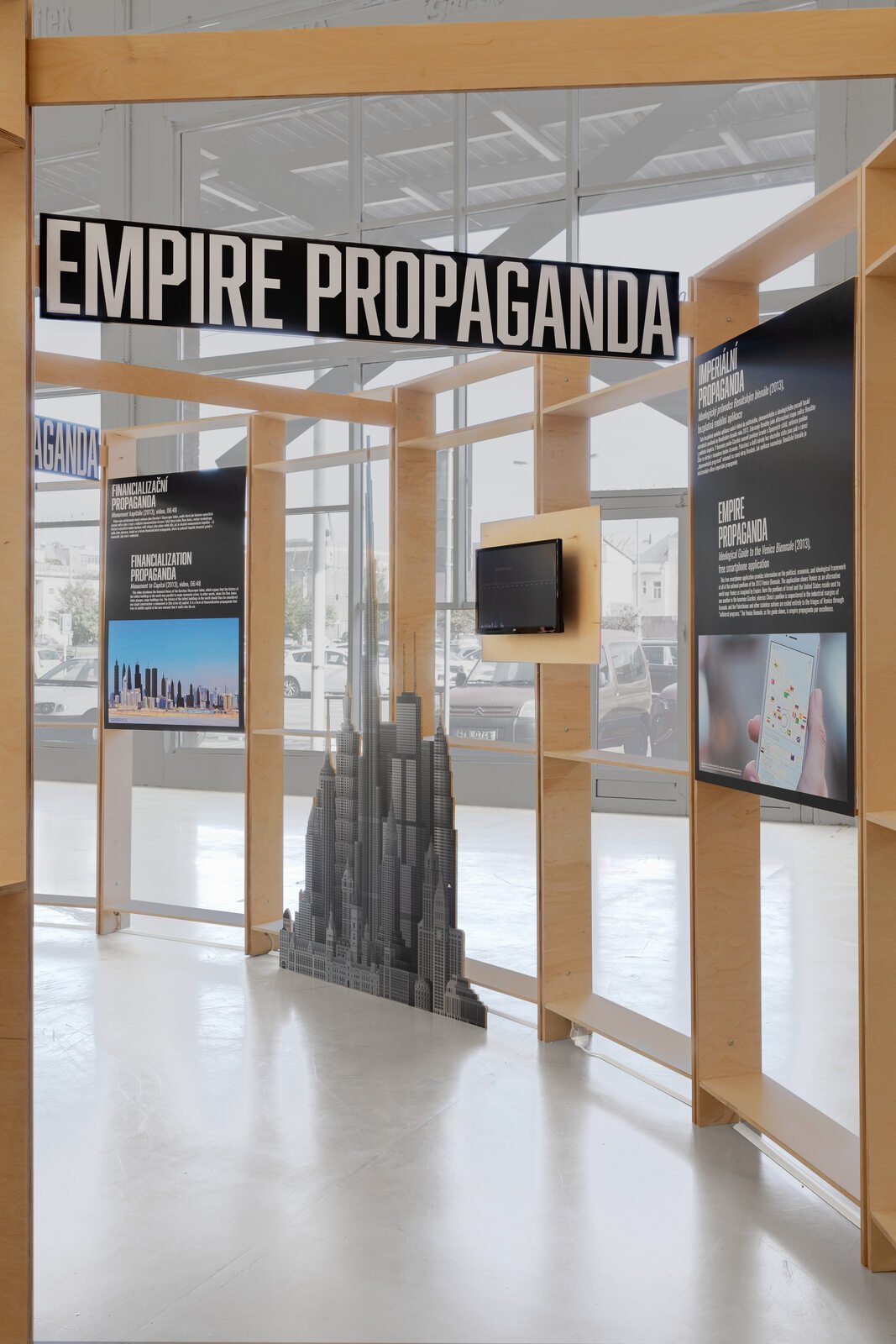
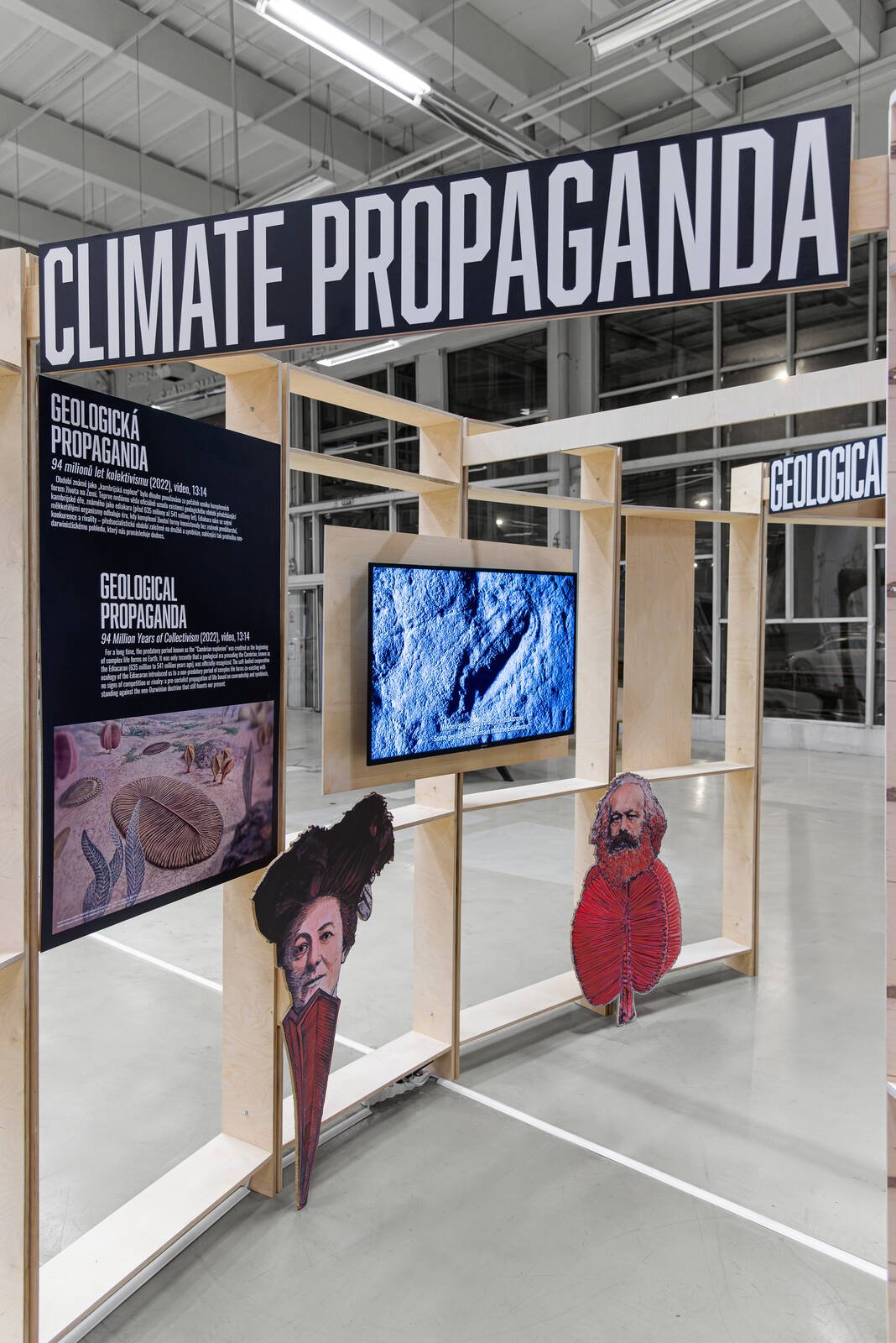
[1]Sarah Posner, ‘How Steve Bannon Created an Online Haven for White Nationalists’, August 2016. Mother Jones.
[2]The work was first presented as Steve Bannon: A Propaganda Retrospective (2018) in a much more elaborate installation for an exhibition at Het Nieuwe Instituut, Rotterdam.
[3] ‘Operant Conditioning Chamber’, in Wikipedia, 15 February 2024.
[4]Jonas Stall, Propaganda Theater (2023). Subsequent unattributed quotes are from the video under discussion.
[5]Brooke Seipel, ‘Trump: “Make America Great Again” Slogan “Was Made up by Me”’, The Hill (blog), 3 April 2019.
[6]Svetlana Boym, ‘Nostalgia and Its Discontents’. The Hedgehog Review, Summer 2017.
[7]Hito Steyerl, ‘Too Much World: Is the Internet Dead?’ E-Flux Journal, no. 49, November 2013.
[8]Aeschbach, Lena Fanya, Klaus Opwis, and Florian Brühlmann. ‘Breaking Immersion: A Theoretical Framework of Alienated Play to Facilitate Critical Reflection on Interactive Media’. Frontiers in Virtual Reality 3 (2022)
[9]Toby Young, ‘The Neo-Marxist Takeover of Our Universities’. The Spectator, 6 September 2018.
[10]Catherine L. Newell, ‘The Strange Case of Dr. von Braun and Mr. Disney: Frontierland, Tomorrowland, and America’s Final Frontier’, The Journal of Religion and Popular Culture 25, no. 3 (September 2013): 416–29.
[11]Tuğal is himself quoting Karl Marx’s The Eighteenth Brumaire of Louis Bonaparte (1852).
Artist(s): Jonas Staal, Kryštof Brůha, Lenka Glisníková, Petra Janda, Gabriela Těthalová, Stony Tellers
Exhibition Title: Jindřich Chalupecký Award 2023 Exhibition
Link: https://plato-ostrava.cz/en/Program/2023/11/Jonas-Staal-Skola-Propagandy#programme
https://plato-ostrava.cz/en/Vystavy/2023/Vystava-Cena-Jinricha-Chalupeckeho-2023
Venue: PLATO Ostrava
Place (Country/Location): Ostrava, Czech Republic
Dates: 02.11.2023–25.02.2024
Curated by: Jakub Adamec and the Jindřich Chalupecký Society curatorial collective (Barbora Ciprová, Veronika Čechová, Tereza Jindrová, Karina Kottová)
